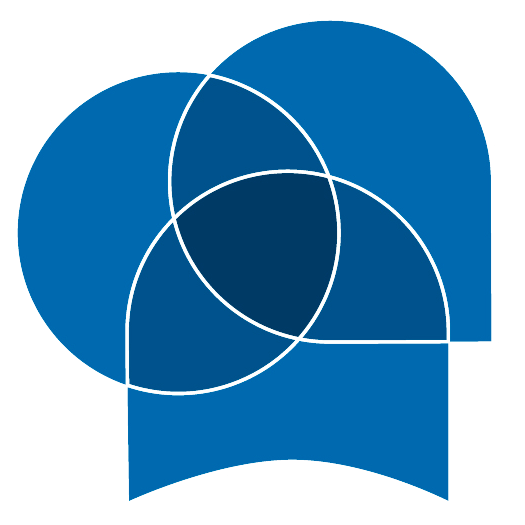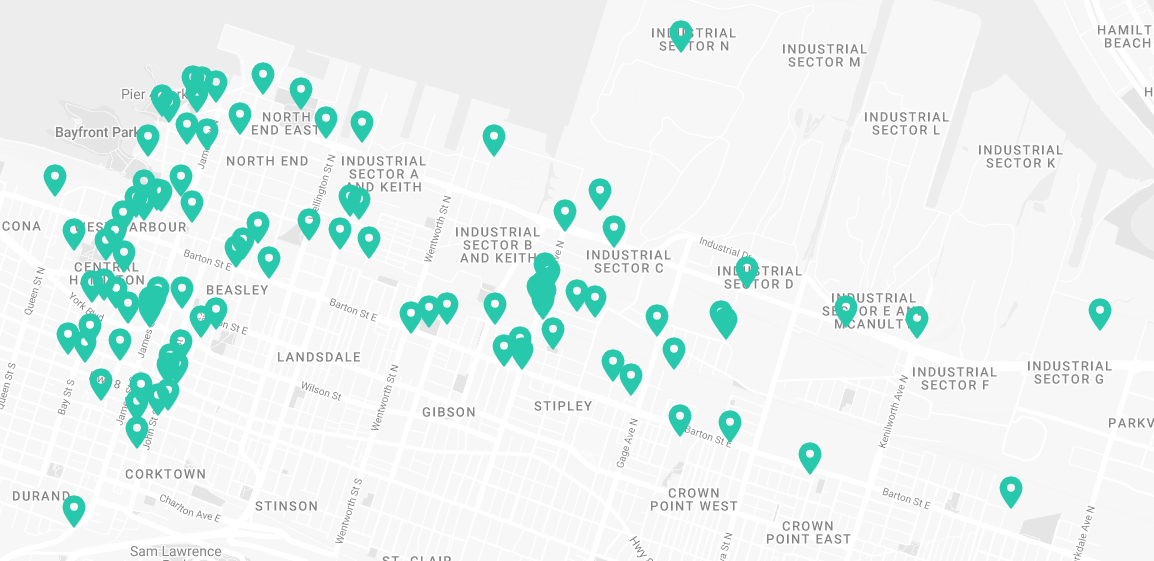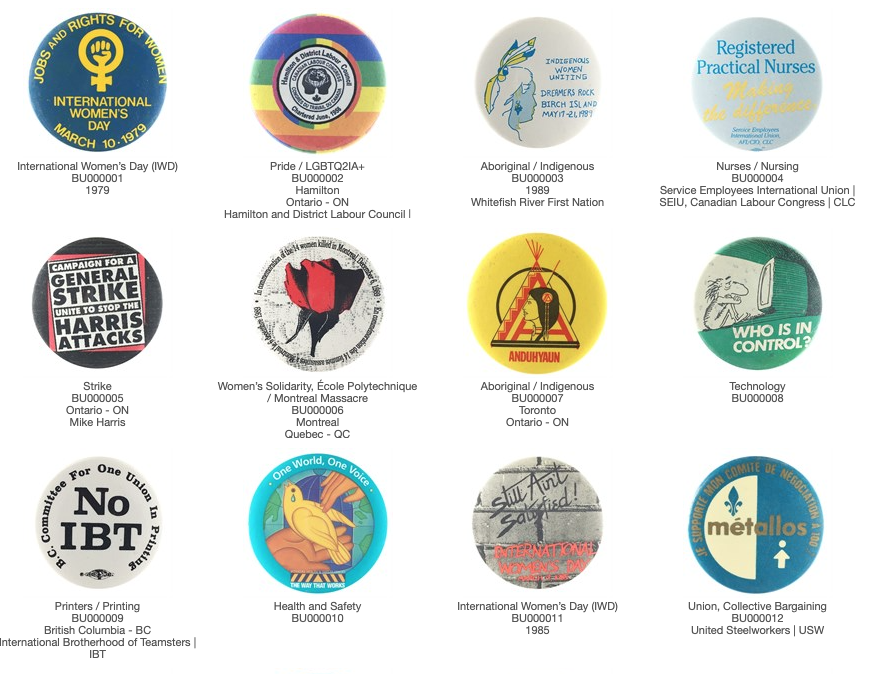The following case study recording is from the ‘Innovating with Collections Online’ cohort members Tara Bursey, Executive Director of the Workers Arts & Heritage Centre (WAHC) and Kat Williams, Outreach and Development Specialist at WAHC.
Throughout the programme, the goal of the Workers Arts & Heritage Centre was to build digital literacy, and to understand how oral histories could be drawn more closely into the work and projects that are done at WAHC. Specifically, this was applied to work on a ‘Digital Banner’ project – documenting trade union banners from across the country for an upcoming online exhibition.
WAHC are updating previous records and looking at policies around oral histories that reflect WAHC values, to ensure that future projects uphold those same values.
Transcript
TB: My name is Tara Bursey. I’m the executive director of the Workers Arts and Heritage Centre in Hamilton, Ontario. Workers Arts and Heritage Centre is a labour History Museum as well as a multidisciplinary Arts Centre that looks at the past present and future of work broadly defined in Canada. We do that through a number of different ways of building public engagement. We produce exhibitions a few times a year. We develop programs for people of all ages. We have a robust late program for families and intergenerational audiences, and importantly we have built some really wonderful digital projects, specifically walking tours, and we have a history of doing oral history from project to project. So this program, our participation in DART, was a wonderful way to reflect on that, and then bring some of that experience into the present.
KW: I’m Kat Williams. I’m the Outreach and development specialist at the Workers Arts and Heritage Centre. We are affectionately known to many by our acronym WAHC. And we are a labour history centre and multi-disciplinary arts centre. We’re located in historic Hamilton Custom House, and so both the wide variety of programs and exhibitions, workshops, educational events, coalesce nicely with the beautiful historical building the we are privileged to call home. And we are a unique in that we are free to the public, and so accessibility is one of our core values as we fulfill our mission to celebrate working people’s culture, art and history.
TB: So our project goal was first and foremost to build digital literacy, and understand how oral histories could be drawn more closely into the programs and projects that we build here at the Workers Arts and Heritage Centre. Something that we were in the middle of when we started working as part of the cohort of the DART program, is we were in the middle of a digital project where we were photographing our collection of really incredible Trade union banners from across Canada. The banners represent unions broadly defined actually from, that existed from the beginning of the 20th century until the end of the 20th century, give or take. So in the fall of 2022 we started photographing our banners. And right now we’re working towards building a digital exhibition of the banners. We are working with Surface Impression on that project. So what we thought would be really exciting was through the DART program, we were interested in building out that project, and thinking about how born-digital assets could be a part of that project, and how oral history could be drawn closer into that project that focuses on material pieces of material culture such as Trade union banners. Some of the activities that we started with, in order to reflect on where we were at with our oral history, is [to] review our institutional archives. And so we went back into previous exhibitions and programs that had taken place at WAHC over our 27 year history. And we looked at where oral history had been a part of previous exhibitions and previous projects, and we discovered some really interesting things through that. We discovered that oral history had been on the founders’ minds when they founded the Workers Arts and Heritage Centre, and that really listening to people’s stories and creating dynamic exhibitions around community stories was really important from the beginning of the organization. And we also, in the context of digital projects, looked at the previous recordings that had been done for our digital project Workers City, and some of those early recordings were done in the 90s and early 2000s, you know, on analog media, and once again have preservation and format concerns now that we’re 20 years on, and we have also, so we were, we were looking at that both from, you know, from how they were used in the exhibitions and on Workers City, but then also how to re-preserve these these file, you know, these formats, and how do we make those interviews and oral histories, maybe, re-accessible to members of our community. So there were collections and and digitization sides of things but then also accessibility sides of things.
KW: And we also wanted to make sure that we were looking at our policies around doing oral history that reflect our values of dignity and equity and solidarity. And so that any storytelling or any gathering that we, that we do in the present, in the future, upholds those values and make sure that we have the full consent and good faith of everyone who would be involved in future projects at work, and that we have a robust policy to preserve and to use any oral histories we collect.
TB: So just to add to that within the context of the banner projects, the banner project was an excellent way for us to look at our past processes and refine processes moving into the future. We’ve been working with a researcher named Keeley Shaw who has a robust experience with oral history, and they were able to share some excellent templates related to gathering oral history. They shared consent forms. They shared some templates for transcribing oral history. So in that sense, we were able to really refine our documentation and our processes so that we could implement oral history processes more uniformly across the board, and with more intention.
Something that was a challenge but admittedly was something really important to reflect on, and I feel like we say this a lot as a small organization, is the amount of time we have to, you know, think critically about, you know, where we are, we came from and where we want to go and to, you know, implement processes with intention. We tend to work a little bit quickly here at WAHC and, and you know, sometimes it can be difficult to find just find the time to even, you know, take part in professional development like the DART program, but you know, what was a challenge really ended up being I think the kind of important groundwork that we really, really needed to do so, you know, for me, well, in the day-to-day it was sometimes challenging to attend DART workshops and commit time to certain tasks. It really was very enriching, and the DART program happening when it did was, you know, really incredible, it dovetailed with our Banner project in a way that, you know, really I have to say it really shaped the banner project in in very positive ways. So…
KW: I think when you’re low on resources both human and and otherwise, it can be a positive thing to, you know, find areas of your work that can be, sort of, doubled up or that can serve like, you know, when can one area of your work or one project actually serve another, and this was a really elegant example of that having DART served the banner project so so beautifully. I think one of our our large challenges to dovetail with time is its capacity, and we have, I think, across oral history projects. There are some staples and [I] alluded to those earlier in terms of the time required to do them well and build relationships, and then the amount of time and effort that goes into good policy making that benefits organization, and the projects that we produce and engage with, and then the media that comes out of projects like this, and how to making that accessible, and making sure that it’s preserved. Well, those things are stable across all oral history projects, but the amount of capacity that each organization has to devote to all those things is variable. And so I think our struggle is looking at these, these core things that are always going to be a part of every oral history project, and trying to figure out how do we make sure that we’re, we’re able to do all of that well and, and have capacity to still bring to the table.
TB: Yeah, and just to, just to add to that something that I’ve been really cognisant of as a, as the, still a very new executive director here is, you know, building our networks and building our community and ,you know, to speak to that, that capacity issue that Kat is referring to, to be able to have a contract researcher on board who is, you know, young energetic also, you know, brings an interesting lens to the project. It’s been a really wonderful thing having Keeley involved as someone who, you know, hasn’t previously worked on digital oral history project with WAHC. For WAHC’s first 20 years or so, we worked with a lot of the same people, a lot of the same personnel have worked on these projects of ours like Workers City, but I think that, you know, broadening our community has had a really positive impact and that we’re, you know, we’re seeing things through fresh eyes, and I think that Keely’s brought a lot to the project and will continue to.
TB: I would say that one of the takeaways from the project was when you’re doing something like oral history, you know, in my case for the first time within an institution, it’s easy to get a little bit overwhelmed. And to focus on what you don’t know instead of what you do know, and I think what was really inspiring for me about the project, and being involved with DART, was understanding how other institutions have implemented oral histories. And there were nuggets of other projects that I found particularly inspiring, and while seeing or learning about a massive project that a much larger institution did can be a little bit overwhelming, and can make us focus on our lack of capacity even more, I find that the kind of nuggets, golden nuggets, within a larger project. So the small pieces of a larger project can actually be these catalysts for, you know, some really exciting ideas. So for me learning about the projects of other organizations was really very inspiring
KW: I would agree that the main takeaways for me from the project, were reintroducing some of the oral history concepts that I was familiar with, and into a museum context, a museum-specific context. I appreciated and hearing about and learning more about how some of the established world oral history practices across historical disciplines have worked, or not worked, in museum contexts. And I thought that was quite interesting and, sort of, actually the lack of established international museum standards around oral history, and that there’s, there’s a lot of room to grow there, and that’s, I think, inspiring obviously for us as an industry to do work there. But then also a bit, you know, it’s, it’s really being also to realize like okay, we’re not, you know, we as an industry, you know, as an industry and as a sector have room to grow and so it makes us doing things like I saw the more exciting. I also think that having a cohort of organizations who as Tara said were about our size, and who were in relatives proximity to us, you know, we’re all in Canada, most of us were in Ontario and, and so to be able to build relationships there as we were learning just is really beneficial because we’re all small organizations. So oftentimes we’re like one or two people who are working on these things and so in the same way that, you know, Keely has breathed new life into, you know, this project and into the banner project. I feel like it’s really a lovely opportunity for us to collaborate and to trade ideas across the cohort, and that’s been really lovely, and it’s just been neat to listen to what other folks are doing and what other projects they’re excited about, and different ways that they’re activating their collections, and I think that’s just really inspiring. And we don’t, we haven’t, we don’t always get the the chance to turn the time since the, around and, and build those and ask those specific questions. So I really appreciated that and, as a part of our our DART learning experience.
TB: Yeah for me what is really, really key is that through DART we’re learning together and in some cases we, you know, know some of the folks in the cohort in other cases, we know of the organizations, the Mississippi Valley Textile Museum is a perfect example of that, you know, where we don’t have a kind of a close collegial relationship, but I think I speak for Kat as well when I say that we admire their work greatly. So to be able to sit at the same table with them is, is really fantastic. So, you know, thinking about the value of DART it really is, you know, being in a kind of a collegial classroom together learning together from, from one another
So right now we are about halfway through our Banner project, and the oral history component of that project is well on its way. So that’s really exciting that through our participation in the DART program we were able to fairly quickly mobilize oral history projects or, sorry, oral history processes within the context of that project.
So I would say that taking part in the program was, was inspiring and just, you know, helped us just put our boots to the ground and, and just, you know, start on that in the spirit of experimentation and just, you know, harnessing the, the opportunity that was in front of us in this project that we were already in the middle of, but I think in integrating oral histories into our Banner project it provides a first step to, to build on so, as I mentioned before, we have some strong processes and some strong templates that we now have documentation of, so when we continue with oral histories in future digital projects we can build off of what we have developed within the context of this project, and even better integrate some of the great ideas that we learned about through the DART workshops.
KW: I think that this will impact future projects in that we are able to turn the learning opportunities that we’ve had here and the relationships that we’ve built and the time that we’ve had to reflect on policy divisions on building resources. And that a part of the banner digitization moving forward, [we] will be able to use those resources and those relationships to our benefit on all future projects. And so there’s the sustainability element moving forward, it’s really exciting.
In the clip, Tara Bursey and Kat Williams break down their project:
- Goal
- Activities
- Challenges
- Learnings
- Next Steps
- Impact of work on future projects


